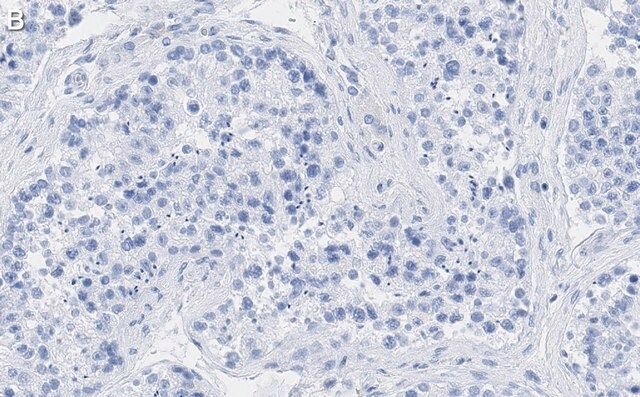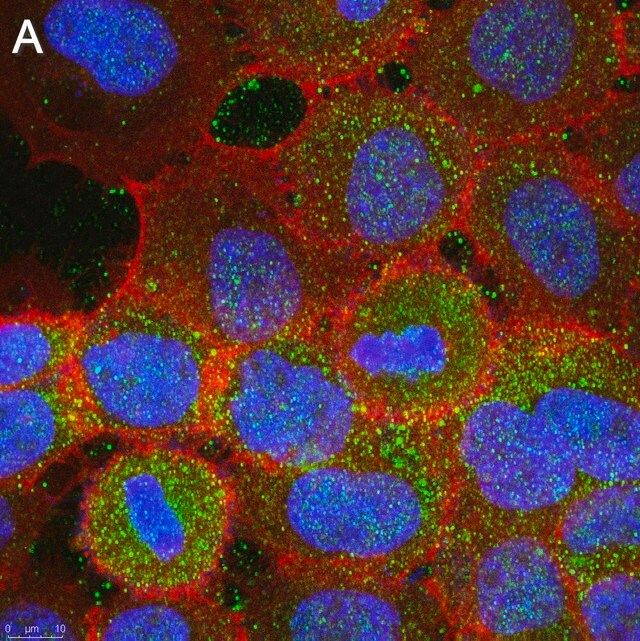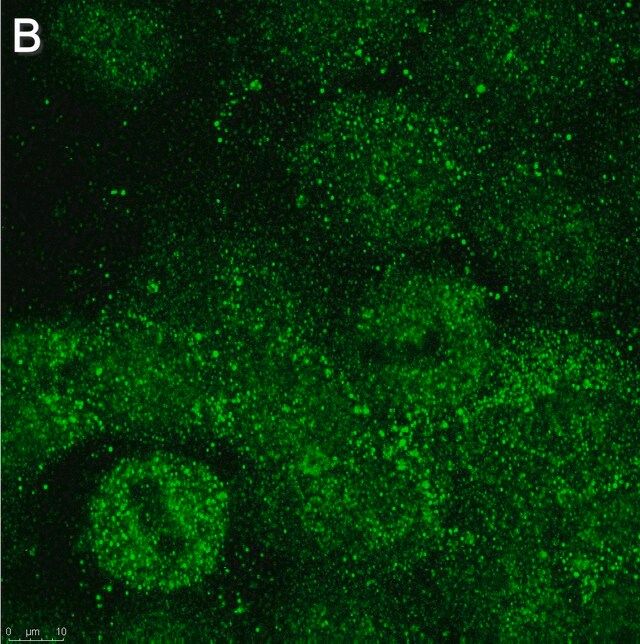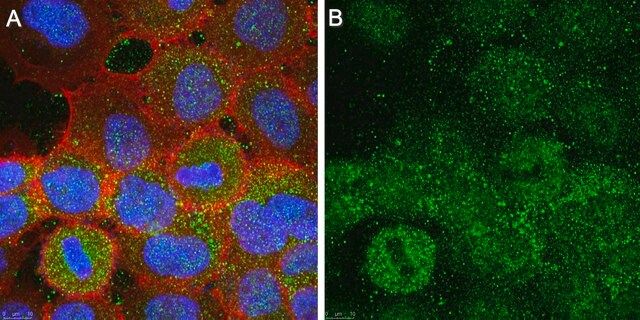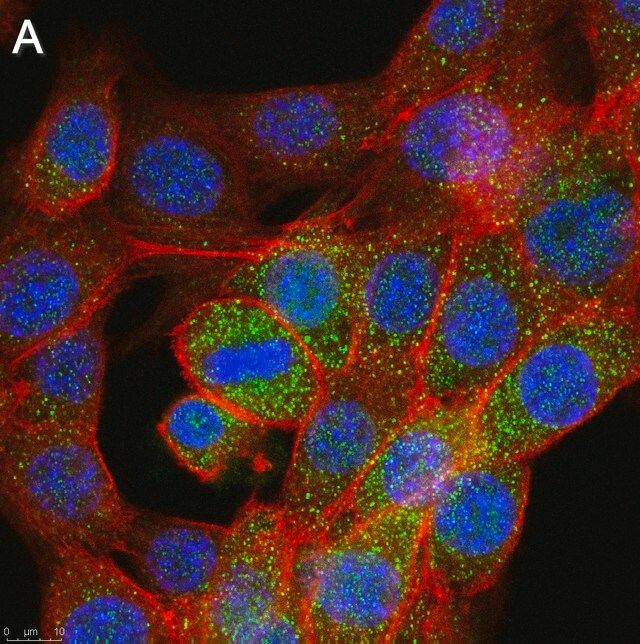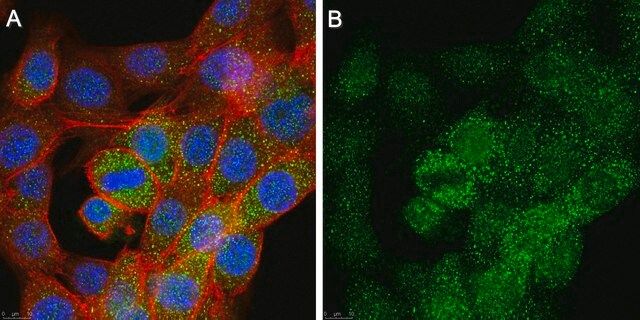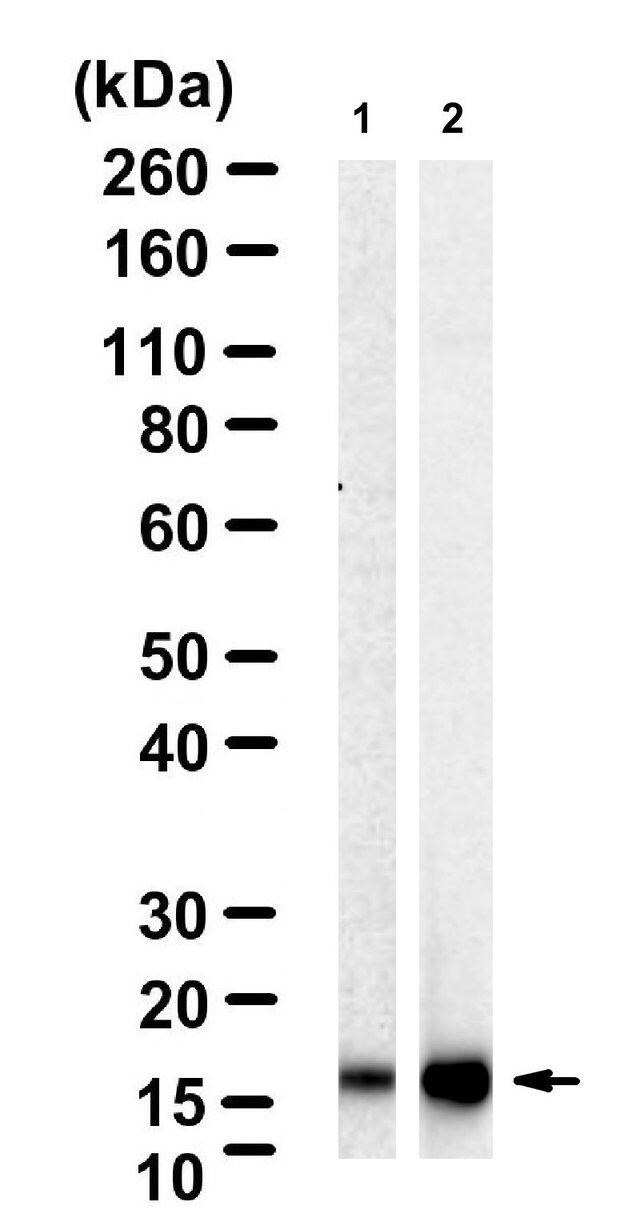您的位置:首页 > 产品中心 > Anti-Calmodulin Antibody, clone 1G3 ZooMAb® Rabbit Monoclonal
Anti-Calmodulin Antibody, clone 1G3 ZooMAb® Rabbit Monoclonal
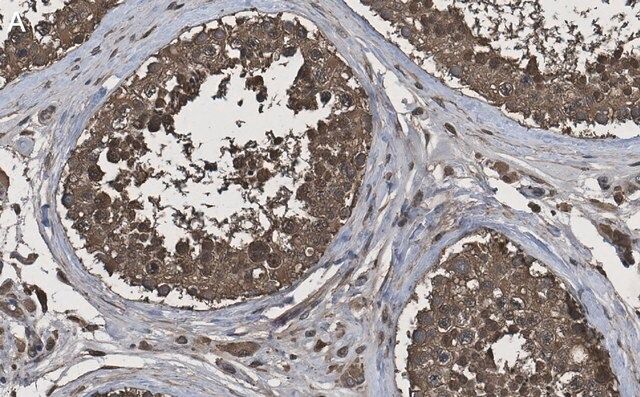


产品别名
Anti-Calmodulin Antibody, clone 1G3 ZooMAb® Rabbit Monoclonal
CaM;Calmodulin 1
产品性质
| Quality Level【质量水平】 | 200 |
| biological source【生物来源】 | rabbit |
| recombinant【重组】 | expressed in HEK 293 cells |
| conjugate【偶联物】 | unconjugated |
| antibody form【抗体形式】 | purified antibody |
| antibody product type | primary antibodies |
| clone【克隆】 | 1G3, recombinant monoclonal |
| description【描述】 | recombinant, expressed in HEK 293 cells |
| product line【产品线】 | ZooMAb® learn more |
| form【形式】 | lyophilized |
| mol wt【分子量】 | calculated mol wt 16.84 kDa observed mol wt ~17 kDa |
| purified by【纯化方式】 | using Protein A |
| species reactivity | mouse, rat, human |
| species reactivity (predicted by homology) | monkey, bovine, canine |
| packaging【包装】 | antibody small pack of 25 μL |
| greener alternative product characteristics【环保替代产品特性】 | Waste Prevention Designing Safer Chemicals Design for Energy Efficiency Learn more about the Principles of Green Chemistry. |
| enhanced validation【增强验证】 | recombinant expression Learn more about Antibody Enhanced Validation |
| technique(s) | affinity binding assay: suitable immunocytochemistry: suitable immunohistochemistry (formalin-fixed, paraffin-embedded sections): suitable western blot: suitable |
| isotype【同位素/亚型】 | IgG |
| epitope sequence【表位序列】 | C-terminal |
| Protein ID accession no.【Protein ID登记号】 | NP_001734.1 |
| UniProt accession no.【UniProt登记号】 | P0DP23 |
| greener alternative category【环保替代产品分类】 | |
| shipped in【运输】 | ambient |
| storage temp.【储存温度】 | 2-8℃ |
基本信息
| General description【一般描述】 | ZooMAb® antibodies represent an entirely new generation of recombinant monoclonal antibodies.Each ZooMAb® antibody is manufactured using our proprietary recombinant expression system, purified to homogeneity, and precisely dispensed to produce robust and highly reproducible lot-to-lot consistency. Only top-performing clones are released for use by researchers. Each antibody is validated for high specificity and affinity across multiple applications, including its most commonly used application. ZooMAb® antibodies are reliably available and ready to ship when you need them. |
| Specificity【特异性】 | Clone 1G3 is a Rabbit recombinant monoclonal antibody that specifically detects calmodulin. It targets an epitope within 22 amino acids from the C-terminal region. |
| Immunogen【免疫原】 | KLH-conjugated linear peptide corresponding to 22 amino acids from the C-terminal region of human Calmodulin. |
| Application【应用】 | Quality Control Testing Evaluated by Western Blotting in RT4 cell lysate. Western Blotting Analysis: A 1:10,000 dilution of this antibody detected Calmodulin in RT4 cell lysate. Tested applications Western Blotting Analysis: A 1:10,000 dilution from a representative lot detected Calmodulin in A431 cell lysate. Affinity Binding Assay: A representative lot of this antibody bound Calmodulin peptide with a KD of 6.8 x 10-8 in an affinity binding assay. Immunohistochemistry (Paraffin) Analysis: A 1:1,000 dilution from a representative lot detected Calmodulin in human testis tissue sections. Immunocytochemistry Analysis: A 1:1,000 dilution from a representative lot detected Calmodulin in A431 and NIH3T3 cells. Note: Actual optimal working dilutions must be determined by end user as specimens, and experimental conditions may vary with the end user |
| Physical form【外形】 | Purified recombinant rabbit monoclonal antibody IgG, lyophilized in PBS, 5% Trehalose, normal appearance a coarse or translucent resin. The PBS/trehalose components in the ZooMAb formulation can have the appearance of a semi-solid (bead like gel) after lyophilization. This is a normal phenomenon. Please follow the recommended reconstitution procedure in the data sheet to dissolve the semi-solid, bead-like, gel-appearing material. The resulting antibody solution is completely stable and functional as proven by full functional testing. Contains no biocide or preservatives, such as azide, or any animal by-products. Larger pack sizes provided as multiples of 25 μL. |
| Reconstitution【重悬】 | 300 μg/mL after reconstitution at 25 μL per vial. Please refer to guidance on suggested starting dilutions and/or titers per application and sample type. |
| Legal Information【法律信息】 | ZooMAb is a registered trademark of Merck KGaA, Darmstadt, Germany |
产品说明
| Target description【目标描述】 | Calmodulin (UniProt: P0DP23; also known as CaM, Calmodulin 1) is encoded by the CALM1 (also known as CALM, CAM, CAM1) gene (Gene ID: 801, 805, 808) in human. Calmodulin (CaM), a small 17 kDa ubiquitous Ca2+-binding protein that serves as a major physiological effector for a wide range of cellular responses. It acts as an intracellular Ca2+ receptor and transduces Ca2+ transients, usually in response to growth factors. It mediates the activity of a number of Ca2+ regulating enzymes, including protein kinases, phosphatases, nitric oxide synthases, and phosphodiesterase. CaM is a dumb-bell shaped molecule with two globular domains at the amino and carboxyl termini that are connected by a long central eight-turn -helix. CaM can bind four molecules of Ca2+ with high affinity. The Ca2+binding sites are arranged in pairs, with each pair located in a globular domain. In vertebrates, the Ca2+binding sites in the carboxy-terminal lobe are reported to have a slightly higher affinity for Ca2+ than the pair of Ca2+binding sites at the amino-terminal lobe. Upon binding of Ca2+, CaM undergoes a conformational change, exposing a hydrophobic region on the molecule, which is rich in methionine. This hydrophobic region is believed to be involved in the binding of CaM to protein receptor molecules. The high methionine content of two hydrophobic regions on the globular domains creates a flexible, yet sticky interaction surface. It allows CaM to interact with a variety of proteins, without placing high demands on the specificity of the interaction. Therefore, Ca2+/CaM can bind effectively to the CaM-binding domains of all its target proteins, in spite of their lack of amino acid sequence homology. CaM′s ability to recognize CaM-binding domains is further improved by the intrinsic flexibility of the central linker region, which allows the two domains of CaM to slide over the surface of the a-helical bound peptide to find the most favorable binding orientation. This ZooMAb® recombinant monoclonal antibody, generated by our propriety technology, offers significantly enhanced specificity, affinity, reproducibility, and stability over conventional monoclonals. |
| Storage and Stability【储存及稳定性】 | Recommend storage of lyophilized product at 2-8℃; Before reconstitution, micro-centrifuge vials briefly to spin down material to bottom of the vial; Reconstitute each vial by adding 25 μL of filtered lab grade water or PBS; Reconstituted antibodies can be stored at 2-8℃, or -20℃ for long term storage. Avoid repeated freeze-thaws. |
| Disclaimer【免责声明】 | Unless otherwise stated in our catalog or other company documentation accompanying the product(s), our products are intended for research use only and are not to be used for any other purpose, which includes but is not limited to, unauthorized commercial uses, in vitro diagnostic uses, ex vivo or in vivo therapeutic uses or any type of consumption or application to humans or animals. |
安全信息
| Storage Class Code【储存分类代码】 | 13 - Non Combustible Solids |
| WGK | WGK 1 |





